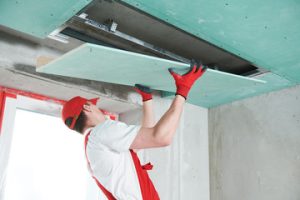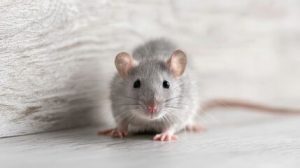Ceiling water damage isn’t just unsightly—it can lead to structural issues and mold growth. Stains and a musty smell are the first indications of trouble, but other symptoms like cracks or sagging may also require attention.
Preventative measures like regularly inspecting the roof and insulating pipes can help. But for major problems, the best option is to hire Ceilings Perth professional.

Cracks
The natural wear and tear of daily life can wreak havoc on the ceilings in your home, but noticing damage early is the key to timely intervention and cost-effective repairs. Cracks, stains, and peeling paint are common problems that can lead to a variety of issues if left unchecked.
Water stains, mold growth, and deformed ceilings can all compromise the structural integrity of your home and pose health and safety risks for you and your family. Conducting regular inspections with a flashlight, moisture meter, and ladder is an effective way to spot potential problems before they grow out of control.
Small cracks in the ceiling can usually be patched with self-adhesive fiberglass mesh tape and joint compound, but larger or recurring cracks require more extensive repair work. First, score the area around the crack with a utility knife to create a shallow cut, then clean away loose paint, paper, and crumbling bits from the surface. Score the area again and apply another layer of tape to prevent the crack from reopening.
Leaking roofs, faulty appliances, and damaged plumbing pipes often cause ceiling leaks. Moisture trapped in the drywall can deteriorate the structure, leading to sagging, mold and mildew, and stains. Ensure adequate ventilation in your home to reduce humidity levels, which may also contribute to plaster damage and rot.
Stains
Stains on the ceiling can be caused by a number of issues, including water damage, sagging drywall, and fungal growth. Identifying and treating these unsightly marks early is crucial to avoiding extensive and costly damage.
One of the most common signs of a ceiling stain is a yellow, brown, or copper-colored patch that may be accompanied by peeling paint or a musty odor. These symptoms indicate that a leak is active and must be addressed as soon as possible to avoid further damage. It is also important to note that new stains will appear darker and wetter than older stains, which can help determine the urgency of a leak repair.
If left untreated, water stains can lead to structural damage in the ceiling and nearby walls. This may cause sagging, cracking, or even collapse if the problem is severe enough. Additionally, water damage can promote mold and mildew growth, which can pose a health risk for those with respiratory conditions.
Stains can be prevented by ensuring that the roof is properly ventilated and regularly inspected for damage. Homeowners can also limit the likelihood of stains by keeping up with maintenance and scheduling regular home inspections after heavy rains or plumbing problems. A professional inspection can help property owners spot underlying issues and prevent costly repairs.
Nail Pops
Nail pops are small, rounded blemishes that appear in drywall and paint. They look like nail holes but aren’t necessarily indicative of slab or foundation movement. However, they can sometimes signal a bigger problem and should be fixed promptly.
Often, nail pops occur along ceiling seams. The nails used to secure the drywall to wood framing studs slowly push through the surface of the wall or ceiling. Depending on the size of the hole, they may either protrude slightly or break through the paint surface entirely. They aren’t usually dangerous and can be easily fixed by a trained professional.
However, if they’re found in high-traffic areas or in places that are hard to camouflage, they can be unsightly and create safety concerns. For example, if a protruding nail hits clothing or furniture, it could damage them. Moreover, if the nail indicates that the drywall is loose, it could fall and create a safety hazard in your home.
Most nail pops are caused by natural home settling and can be resolved with a simple repair. Typically, we drive a screw about an inch or two away from the nail pop to anchor it more securely and then skim over it with joint compound. Once dry, we sand the area and touch up with matching paint.
Dust
Besides being unsightly, water damage to the ceiling can lead to a variety of problems, including mold and mildew growth, structural issues, and health hazards. Identifying and promptly addressing this issue can help protect your home’s integrity and its occupants.
Visible signs of water damage to the ceiling include water stains, discoloration, and peeling paint. Hairline cracks and sagging in the ceiling can also indicate more severe damage. Moisture also provides a perfect breeding ground for the formation of mold and mildew, which can pose serious health risks for the occupants.
Detecting these problems requires close inspection of the affected area. Professionals use specialized equipment to evaluate the extent of the water damage. They also look for potential causes of the problem, such as internal leaks, which may be caused by damaged shingles or broken pipes.
Attempting DIY repairs can lead to significant and costly consequences. In addition to the danger of falling ceilings, DIY approaches rarely address all areas of the affected area or prevent moisture from seeping into surrounding materials. These issues can be especially dangerous for aging properties that have experienced substantial structural problems over time. A water damage company is the safer and more reliable choice for addressing these issues.
